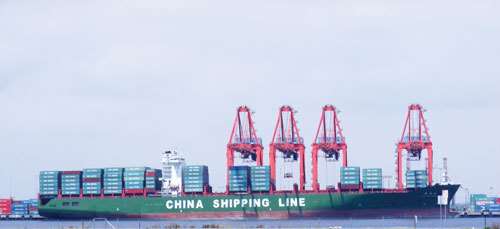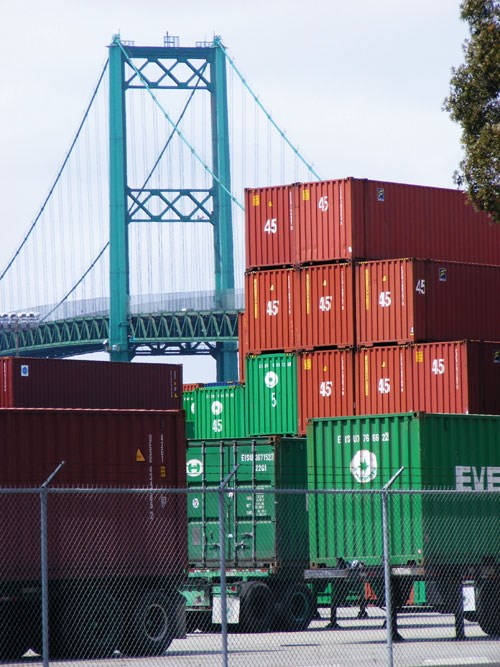China Shipping--A Midwesterner's View
In the Midwest, we see the China trade issue pretty simply. We lose our manufacturing jobs to cheap overseas labor; we pay our taxes to Washington, D.C., and we wonder why nobody does anything about those cheap imports killing our jobs. We still wonder why the currency peg hasn’t been dealt with, and we wonder what is so difficult about this. On the West Coast, the view is a little different.
In the Midwest, we see the China trade issue pretty simply. We lose our manufacturing jobs to cheap overseas labor; we pay our taxes to Washington, D.C., and we wonder why nobody does anything about those cheap imports killing our jobs. We still wonder why the currency peg hasn’t been dealt with, and we wonder what is so difficult about this.
On the West Coast, the view is a little different. All of those ships bringing in containers from across the Pacific mean jobs—at the port, the railway, the warehouse, the brokerage, the customs house, the Coast Guard, the truck lines and elsewhere. People on the West Coast see imports as opportunities for their regional economy. In the Midwest, we see them as assaults on our way of life and our jobs.
Featured Content
I recently visited the West Coast to learn about foreign trade, but what I learned by driving around with my eyes and camera open was different from what the speakers at the trade conference had to say.
First, we incorrectly demonize the Chinese for their low prices and low-cost labor. Standardized shipping containers have created an easy-to-use pipeline for moving high-value products anywhere in the world via ocean freight.
The advances in communications, GPS tracking and Internet computing have made it possible for companies to manage disparate operations around the globe and know the location of each and every container.
With such a management information infrastructure in place, it is no longer a challenge to find and use the globally lowest-cost supplier. The cost of labor and materials in Asia is lower than those costs here. As long as we consumers continue to demand lower prices, we can be assured that our suppliers will stay ahead of us by demanding even lower costs for the components (precision machined parts) in the products we buy. And today, that is easily accomplished by sourcing overseas.
Second, our Midwestern tax dollars go to Washington, D.C., where they are then appropriated and sent out to the West Coast to help build more infrastructures at the ports to bring in even more containers from overseas.
The photo shown here is of the port of Los Angeles. But this scene of ship after ship loaded to the sky with semitrailer-sized containers can be seen many places up and down the West Coast every day.
Third, our industry lacks the scale needed to get attention. I estimate that one week’s worth of shipments from our member companies would not fill the first half of the ship in the photo. Multiply the number of ports on the West Coast by the number of ships, and it’s easy to see that help from Washington for the Midwest isn’t likely to arrive anytime soon. The magnitude of the flow of goods, and thus the cash from foreign trade through these ports, is staggering.
In recent years, our industry has exited from the highest-volume, lowest-cost commodity work. We have had success quoting on export opportunities for the precise, highly engineered, critical products we make. The recent decline of the dollar against the euro has given high-quality North American shops new business, and the aerospace and medical markets remain strong.
I am grateful for the eye-opening glimpse into how the unfamiliar West Coast works. It gives me resolve to help our member companies address our competitiveness and sustainability issues first. It motivates me to help us find those niche opportunities where, because of lot size, quality requirements or delivery/service needs, our shops and technology can be competitive.
My trip to Los Angeles made me aware once again of my Midwestern myopia and why it’s important to travel, see new sights, explore other parts of the country and get a different perspective. Now, having recognized the effects of my Midwestern point of view, I can take steps to prevent it from controlling my thinking.
There is something to be said for leaving one’s comfort zone—one’s familiar territory—and looking anew at what “you always knew” through different eyes and under different skies. In the unfamiliar, we can find and reclaim new truths and new understandings.
— Precision Machined Products Association







